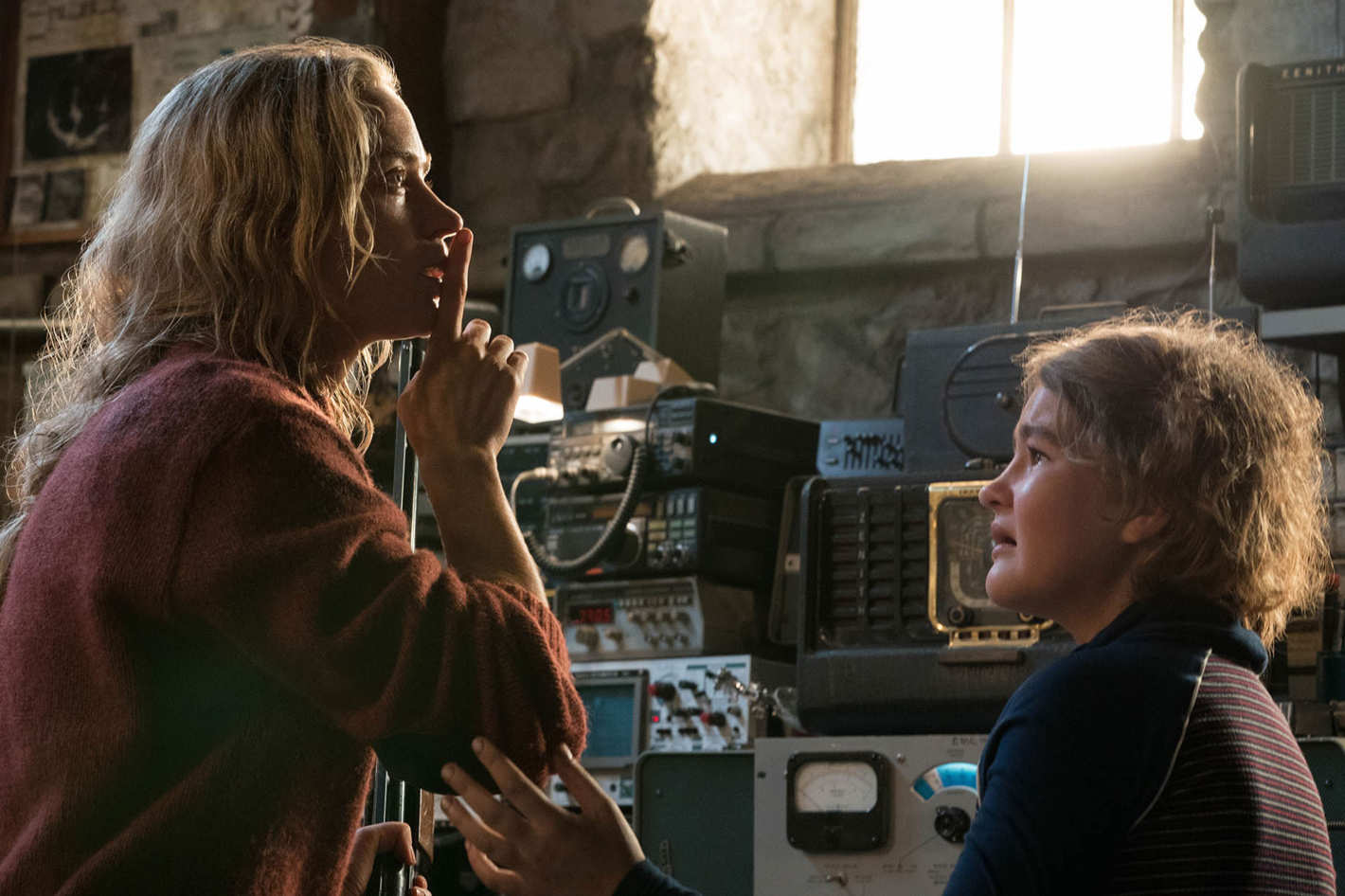Sound is such a powerful component of communication that sometimes we take it for granted. So it is unsurprising that many were skeptical about A Quiet Place when it was announced. To make a film is already challenging enough, but to remove one of the core components used to convey a narrative to the audience makes for an even greater challenge. This film being the directorial debut of John Krasinski did not help skepticism either. So, when I stepped into the theatre I was floored by how incredible the film was.
The film is set in a post apocalyptic future in which our world has been overrun by aliens that seem to be almost indestructible and incredibly responsive to sound. The story revolves around a family that have managed to survive for some time on a farm. Throughout the film, we are given a powerful cast who deliver a truly stellar performance. Krasinski and Emily Blunt deliver exceptional performances as spouses and have great chemistry, which isn’t surprising considering they are married in real life. However, the children were a paramount part to the film’s success. With most thriller and horror films we find that the role of children tend to be a weak link and a nuisance if anything. In this film however, the children in this film performed their roles exceptionally well.
Another element that made the film so captivating was the dual perspective it has on sound as one of the children is actually a deaf in character, portrayed by an actress who is deaf in real life. This is a massive step in the direction of inclusivity within Hollywood’s otherwise exclusive tradition. In this case, the actress Millicent Simmonds found that her disability, which tended to be an obstacle normally in her career, was an advantage as it allowed her to actually portray an organic perspective of her character’s struggle. Good storytelling doesn’t need to verbally spoon-feed elements of the story to the audience; instead it finds a way to communicate with the audience using very subtle cues. The opening bridge scene which is seen in the trailer is a good example. Ambient foley sounds plays a key role when it comes to film as it is what keeps audiences immersed. This is why when audio is out of sync it tends to bother us more than video quality. As such, the way Krasinski plays with ambient noise when panning between all the characters and then Simmonds, gives the audience a contrast between absolute silence and sound.
Scenes like these just highlight the detail that was put into the film. The only other film that comes to mind that uses sound this well was Baby Driver as it used it as a perspective and narrative tool as opposed to a dramatic effect. Throughout the film the main form of communication is sign language which not only brings out the realism but also adds diversity to the story by positioning the audience to empathise with a character who has a disability.
There were many good takeaways from this film but one theme that we as an audience tend to overlook is how significant our ability to hear is. It’s easy to make assumptions and take things for granted. So, when important reminders as blatantly obvious as the one in A Quiet Place come around, we should take them as a point of reference to understand that a disability does not define a person’s capability. This film took an enormous gamble on Krasinski, as well as his directorial and casting choices, and I can honestly say that I’m glad it did.
This is a film that I can thoroughly recommend to be seen in cinemas, preferably with good company. The audience reaction to this film was sublime. Due to the nature of the film’s narrative surrounding around the theme of silence, the audience’s natural reaction was to follow suit. I have never seen an audience so easily manipulated by sound. The slightest patter of a falling skittle could make anyone jump in their seat. It was so bad that whenever I heard the slightest bit of speech over a whisper the audience would collectively shush the theatre. This is a film that you would want those close to you to see at least once, if not for its heartwarming story or thrills, then for the attention to detail and narrative genius.
Rashdan Ramli

